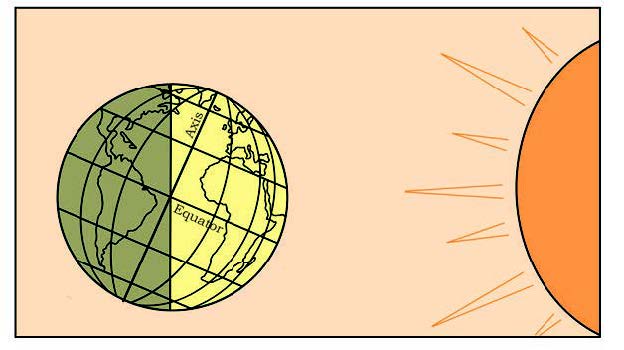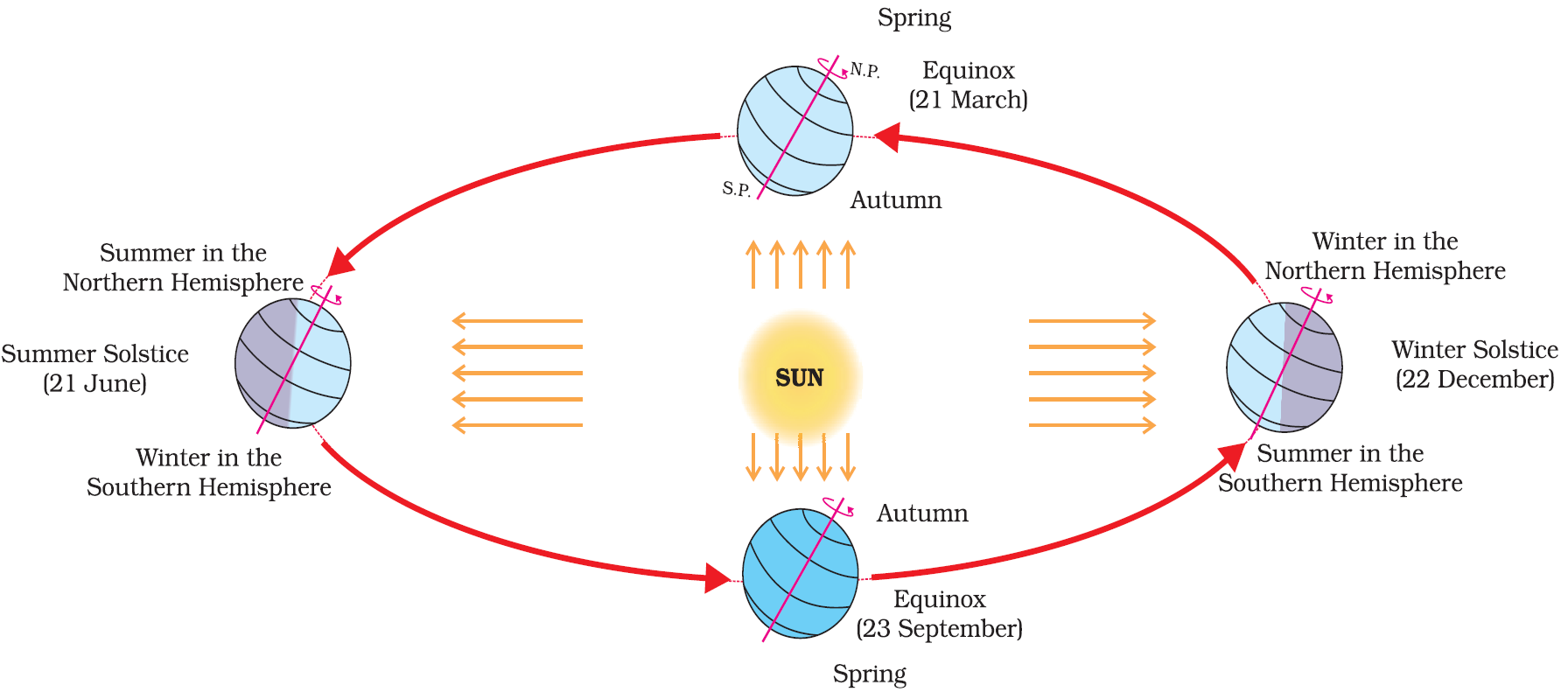Class 6 Geography Motions of the Earth chapter 3 notes NCERT Solution in Hindi. NCERT Class 6 Geography Notes, Textual Question Answer and Important Question Answer also Available for Various Board Students like HBSE, CBSE, UP board, Mp Board, RBSE and some other State Boards.
Also Read:- Class 6 Geography NCERT Solution
NCERT Solution for Class 6 Geography Chapter 3 Motions of the Earth Notes for students.
Motions of the Earth Class 6 Geography Chapter 3 Notes
The Earth has two types of motions. one of them is rotation and other one is revolution.
1. Rotation :- It is the movement of the earth on its axis. The axis of the earth which is an imaginary line makes an angle of 66½° with its orbital plane. Due to the spherical shape of the earth, only half of it gets light from the sun at a time. The portion facing the sun experiences day while other one experiences night. The earth takes about 24 hours to complete one rotation around its axis. The period of rotation is known as Earth day. This is daily motion of the earth.

2. Revolution :- The movement of earth around the sun in a fixed path or orbit is called Revolution. Earth takes 365 days and 6 hours to revolve around the sun. These 6 hours in four years create one extra day in a year and this year is called leap year with 366 days (29 days in February instead of 28 days). Seasons change due to the change in the position of the earth around the sun either due to Revolution of earth around the Sun.

21 June :- On this day the Northern Hemisphere is tilted towards the Sun i.e. Sun rays falls directly in the Tropic of Cancer(23½° N) . The longest day and shortest day on the Northern Hemisphere is observed on 21st June while shortest day and longest night is observed in the Southern Hemisphere. This condition is called Summer Solstice.
22 December :- On this day the Tropic of Capricorn(23½° S) receives direct rays of the sun as the South pole tilts towards it. Therefore it is summer in Southern Hemisphere with longest day and smallest night. The reverse happens in the Northern Hemisphere. This position of earth is called Winter Solstice.
23rd September and 21st March :- On these days sun rays falls directly in the equator. At this position, neither of the poles is tilted towards the sun. On these dates the whole earth experiences equal days and equal nights. 23rd September (autumn season in Northern and spring season in Southern Hemisphere) while on 21st March ( autumn season in Southern and spring season in Northern Hemispheres) .
- Australia is the only country which celebrates its Christmas in Summers because it lies in Southern Hemisphere.
- The earth travels around the sun in elliptical orbit.
- If the earth did not rotate on its axis than the portion of the earth facing the sun would always experience day while the other half would remain in darkness and be freezing cold all the time. Life would not have been possible in such extreme conditions.